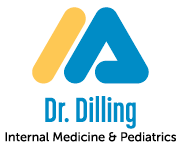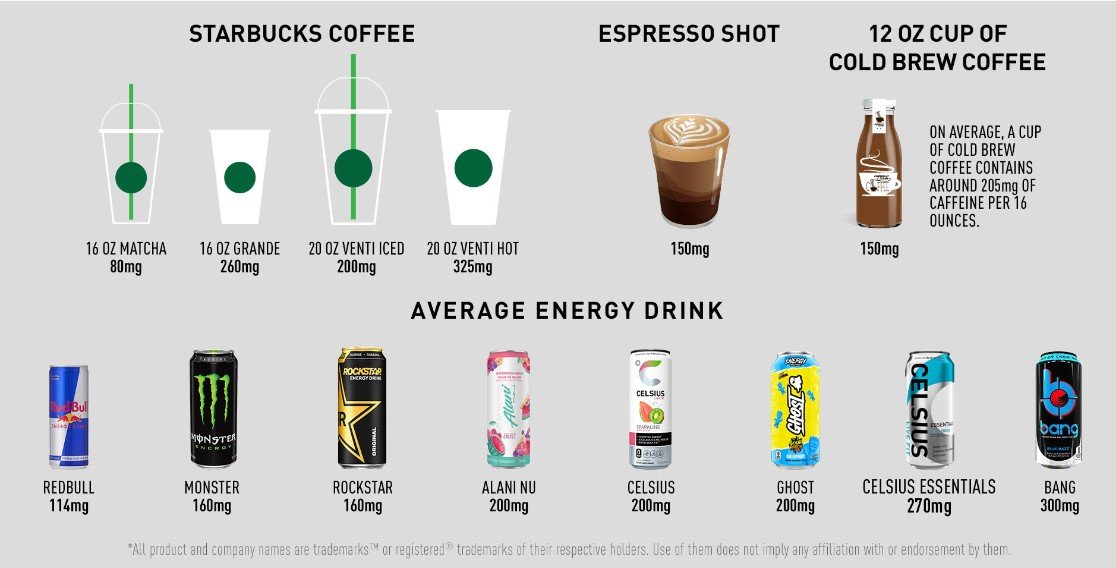Caffeine
Caffeine is the most widely used psychoactive substance globally, and NYC is certainly no exception. Caffeine is a central nervous system stimulant found naturally in coffee, tea, cocoa, guarana, and kola nuts; not so naturally in energy drinks, bars, even ice cream; and in some medications like Excedrin. While moderate caffeine intake is associated with increased alertness and improved cognition, excessive amounts can impact both physical and mental health.
What’s more NYC than the Anthora?
Cardiovascular Health
Moderate caffeine consumption (ie, three 8-ounce cups of coffee a day) is associated with a lower risk of cardiovascular mortality. It is also associated with a lower risk of hypertension (high blood pressure)…but high doses of caffeine (ie, more than four 8-ounce cups a day) are associated with a significant increase in blood pressure.
Calcium
High caffeine consumption interferes with calcium absorption. This in turn decreases bone mineral density and increases the risk of osteoporosis and bone fracture.
Urination
Caffeine increases urinary urgency and nighttime awakenings to urinate.
Cognition
As an adenosine receptor antagonist, caffeine increases dopamine production. More on that later, but the end result is that caffeine enhances attention, learning, and memory performance.
Dementia
The risk of developing dementia does seem to decrease with moderate caffeine consumption.
Driving
In sleep-deprived study subjects, caffeine improves reaction time and enhances vehicular control on driving tests.
Anxiety
Excess caffeine can induce anxiety, particularly in people with pre-existing anxiety disorders and in adolescents.
Sleep Disorders
Caffeine intake increases the risk of sleep disorders, most notably insomnia.
Tolerance/Withdrawal
As above, caffeine increases dopamine production. Once the dopamine reward pathway is activated, it tells us to repeat that action to get the reward. When caffeine and thus extra dopamine are suddenly not present, we can feel unsatisfied, unmotivated, irritable, fatigued, and unfocused. Our minds try to avoid these feelings by telling our body to bring the caffeine, hence annoying withdrawal symptoms like headaches.
Caffeine comparison chart from Celsius
Children and Adolescents
Unlike other addictive substances, caffeinated products have no legal age requirements for purchase or consumption. 94.9% of adolescents aged 15-18 years old consume at least one caffeinated product daily. Effects include increased short-term arousal and motor and brain activity; but also anxiety, hyperactivity, inattention, sensation-seeking, poor decision-making, restlessness, insomnia, and other sleep disturbances.
By altering the sleep cycle, caffeine hampers growth and development. And as compared to adults, children and adolescents display larger swings in emotions like anxiety and depression after caffeine ingestion. In fact, most of the above effects are similar to what we see in the adult literature, but it’s magnified because children and adolescents metabolize caffeine differently.
Energy drinks
Energy drinks hit the US market in 1997 with the introduction of Red Bull. Multiple studies have recommended that energy drinks not be targeted to, available to, nor consumed by children and adolescents. However 40% of adolescents report consuming energy drinks on a regular basis, and 12% of high schools sell them in vending machines, school stores, and on-campus snack bars.
Take a look at students’ backpacks on the bus or subway one morning, and count the number of Celsius energy drinks. These are marketed as part of a healthy lifestyle. Their “Live Fit” campaign targets women, and as detailed in this Guardian article many don’t even realize it’s caffeinated at first glance.
Celsius Live Fit campaign targets women and adolescents
But beyond being the “Red Bull for women” the labeling and advertising also clearly target adolescents. Ditto for Starbucks Refreshers and Dunkin’ SPARKD’ drinks. The latter are just as offensive, but Dunkin’ stores are not made to be after-school destinations like Starbucks are. This Bloomberg piece dives deep on Starbucks’ advertising to tweens and teens.
The other hidden hazard in energy drinks (and many creamers and barista-made coffee drinks) is sugar. A Venti Strawberry Açaí Lemonade at Starbucks has 48 grams of sugar. We know these liquid calories cause weight gain, cavities, heart disease, diabetes, and fatty liver disease.
“Nutrition” facts
Recommendations
Moderation is key when it comes to caffeine consumption. 400 milligrams per day, roughly four 8-ounce cups, is considered safe for most adults and offers the cardiovascular and cognitive benefits without significantly increasing the risk of negative health outcomes. Pregnant and nursing women are advised to keep that below 200 milligrams of caffeine a day, or two 8-ounce cups. I recommend zero caffeine for children (water and milk only!) and only small amounts (100 milligrams or one 8-ounce cup) for adolescents on a very occasional basis.
If you are looking to cut down on caffeine, try going without it on weekends and vacations. Substitution works well too, like drinking a cup of decaffeinated coffee, or walking to the break room for a cup of water rather than coffee. Caution should be used with decaf too though, as it does have small amounts of caffeine - about 15 milligrams per cup rather than 100 milligrams. Caffeine Informer is a handy resource for comparing both caffeine and sugar contents of your favorite drinks.
My husband says (and I don’t disagree) that one of the things he most looks forward to in retirement is enjoying a cup of coffee just for the sake of a good cup of coffee and not out of sheer necessity. That is decades away though, so in the meantime I’ll keep having my three cups a day!
And Happy Halloween!




